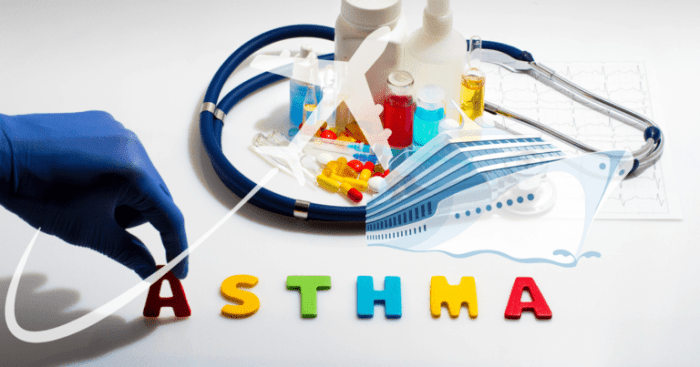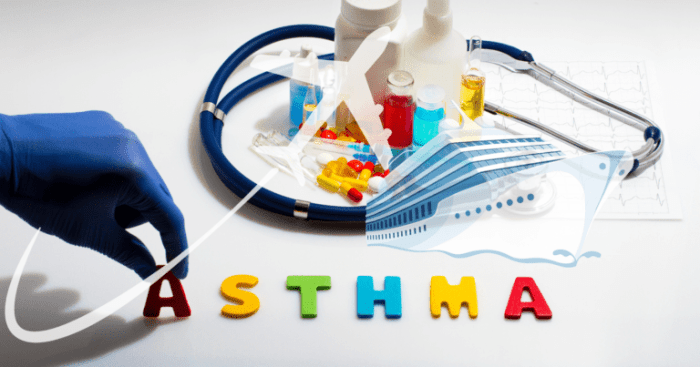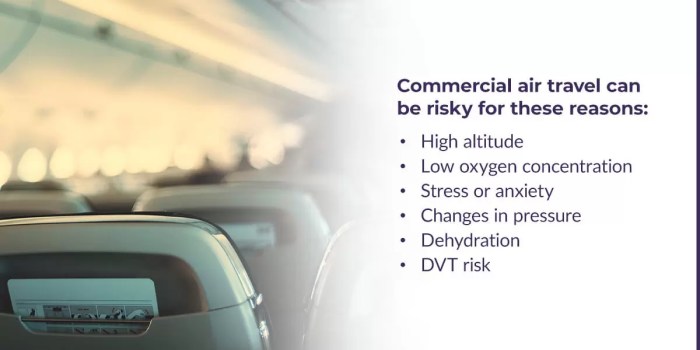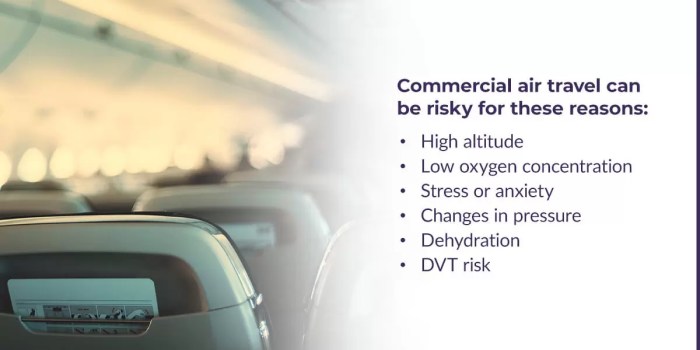Allergy medication and airport security can be a tricky combination. Navigating airport security with allergy medications requires careful planning and understanding of regulations. This guide will walk you through the policies, challenges, and solutions for travelers with allergies, ensuring a smoother and less stressful experience.
Airport security policies regarding medications vary, but generally, prescription medications are permitted with proper documentation. However, allergies can present unique challenges, often requiring extra consideration and preparation. Understanding these intricacies can alleviate anxieties and ensure a positive travel experience.
Overview of Airport Security Policies Regarding Medications

Navigating airport security with medications can sometimes feel like a maze. Understanding the policies and procedures is crucial for a smooth and stress-free travel experience. Knowing the permitted medications, required documentation, and potential exceptions can save you time and potential hassles. This guide provides a comprehensive overview of the policies and procedures.
General Policies and Procedures
Airport security policies regarding medications are designed to ensure the safety of passengers and the security of the airport. These policies are typically established and enforced by individual airports and countries, reflecting local and international guidelines. Regulations aim to prevent the misuse of medications and ensure compliance with relevant laws and regulations. Compliance with these policies is essential for a safe and efficient travel experience.
Types of Medications Permitted or Restricted
A variety of medications can be carried through airport security. However, certain medications may be subject to restrictions or require additional documentation. Generally, over-the-counter medications, such as pain relievers and allergy medication, are usually permitted in reasonable quantities. Prescription medications, however, may have specific requirements, as detailed in the table below. Liquid medications may also have specific volume limitations.
Documentation Requirements for Prescription Medications
Proper documentation is essential for carrying prescription medications through airport security. Passengers are often required to present a valid prescription, along with a signed and dated prescription. This document should clearly identify the medication, dosage, and purpose. Furthermore, the name of the prescribing physician, along with their contact information, may be required. The specific requirements vary depending on the airport and country.
Common Exceptions to Airport Security Rules for Medications
There are several exceptions to the general rules for medications. Passengers with specific medical conditions, such as those requiring specific medications for chronic health issues, may be granted exceptions. These exceptions are often granted upon presentation of a doctor’s note, detailing the necessary medications and their purpose. Documentation and communication with airport security officials are essential in such cases.
The process for applying for exceptions often varies from airport to airport.
Medication Types and Security Policies
| Medication Type | Permitted/Restricted Status | Required Documentation |
|---|---|---|
| Over-the-Counter Medications (e.g., pain relievers, allergy medication) | Generally Permitted | No specific documentation required, but reasonable quantities are expected. |
| Prescription Medications | Generally Permitted, but may be subject to restrictions. | Valid prescription, signed and dated; physician’s contact information (may vary). |
| Liquid Medications | Generally Permitted, but may have volume restrictions. | Valid prescription; physician’s contact information (may vary). |
| Medications for Chronic Conditions | Generally Permitted, but may require exceptions. | Doctor’s note detailing the medication, dosage, and purpose; may require specific authorization. |
| Medications for Emergency Use | Generally Permitted | Doctor’s note detailing the medication, dosage, and purpose; emergency use authorization. |
Challenges Faced by Travelers with Allergies
Traveling with allergies can be a minefield of potential anxieties, especially navigating airport security. From the unfamiliar environment to the potential for exposure to allergens, travelers with allergies face unique challenges that extend beyond the typical traveler’s concerns. Understanding these challenges is crucial for both the traveler and airport personnel to ensure a smooth and safe experience.Navigating airport security with allergies requires careful planning and awareness of potential triggers.
Allergic reactions can range from mild discomfort to life-threatening anaphylaxis, making preparedness paramount. This section will delve into the specific difficulties faced by travelers with allergies, highlighting potential anxieties, common scenarios, and comparing the challenges of carrying allergy medication to those of other medications.
Difficulties During Airport Security
Airport security procedures, while designed to ensure safety, can pose unique challenges for travelers with allergies. The stringent regulations regarding liquids and aerosols, coupled with the potential for cross-contamination, can be particularly problematic. The need for immediate access to allergy medication, often in a specific dosage form, adds another layer of complexity to the process.
Potential Anxieties and Concerns
Allergic individuals may experience heightened anxiety related to potential exposure to allergens during travel. The unfamiliar environment, the presence of large crowds, and the possibility of accidental exposure to triggers can create significant stress. Furthermore, concerns about the availability of emergency medical assistance, the efficacy of airport personnel’s understanding of allergies, and the potential for delays can significantly impact their travel experience.
Common Scenarios of Allergic Reactions
Allergic reactions can manifest in various ways during travel. Exposure to airborne allergens like pollen or dust during flights or in airport terminals can trigger reactions. Contact with food allergens, particularly in airport restaurants or during pre-boarding meals, poses a significant risk. Direct skin contact with common allergens like latex in security screening equipment or materials used in the airport environment is another potential concern.
Comparing Challenges of Carrying Allergy Medication
Carrying allergy medication presents specific challenges compared to other medications. The need for prompt access, often in a specific dosage form, necessitates meticulous planning. The stringent regulations surrounding liquids and aerosols at airport security can be particularly cumbersome for travelers carrying injectable medications or epinephrine auto-injectors. The strict limitations on the quantity and type of medication permitted through security create a need for careful planning and potentially, multiple forms of communication with airline staff and airport personnel.
The necessity to keep the medication in optimal condition (temperature, humidity) further compounds the complexity. Furthermore, the lack of familiarity with the airport’s emergency protocols or the specific procedures of the airline can add to the anxiety and concern.
Mitigation Strategies for Various Allergy Triggers
| Allergy Trigger | Mitigation Strategies |
|---|---|
| Airborne Allergens (pollen, dust) | Consider pre-travel medication, use a mask, and avoid locations known to have high allergen levels. |
| Food Allergens | Thoroughly research airport restaurants and pre-order meals if necessary. Carry a detailed list of allergens and inform airline staff. |
| Contact Allergens (latex, cleaning agents) | Wear gloves if possible during security procedures, inform airport staff about the allergy, and avoid direct contact with potentially contaminated surfaces. |
| Medication-Related Issues | Clearly label medications, have multiple copies of the prescription, and ensure all relevant information is readily available. |
Specific Considerations for Allergy Medication
Traveling with allergies can be challenging, but careful planning and understanding of airport security policies can ease the process. This section focuses on the specific needs of travelers regarding their allergy medications, highlighting the importance of proper storage, labeling, and documentation. Understanding the types of medications, potential risks, and benefits will help travelers navigate airport security smoothly and safely.
Common Types of Allergy Medications
Allergy medications come in various forms, targeting different aspects of allergic reactions. Common types include antihistamines, corticosteroids, decongestants, and epinephrine auto-injectors. Antihistamines like cetirizine and loratadine are often used for preventative or symptomatic relief. Corticosteroids, available in nasal sprays or oral forms, reduce inflammation. Decongestants help relieve congestion, while epinephrine auto-injectors (e.g., EpiPens) are crucial for treating severe allergic reactions (anaphylaxis).
Potential Risks and Benefits of Carrying Allergy Medication, Allergy medication and airport security
Carrying allergy medication is essential for travelers with allergies. However, some types of medication may pose potential risks during airport security screenings. For example, epinephrine auto-injectors, while vital for emergencies, might trigger security concerns due to their appearance. On the other hand, oral antihistamines are generally safe to carry and are readily available over-the-counter. The benefits of carrying the appropriate medication far outweigh the potential risks, as a severe allergic reaction can be life-threatening.
Importance of Proper Storage and Handling
Proper storage and handling are crucial to maintain the effectiveness and safety of allergy medications. Store medications in their original containers, ensuring they are securely closed and free from contamination. Keep medications away from extreme temperatures and direct sunlight. If possible, keep medications in a cooler bag, especially for long flights.
Examples of Allergy Medications and Their Appropriate Labeling
Proper labeling is vital for airport security personnel to easily identify and process medications. For example, an epinephrine auto-injector should be clearly labeled with the name of the medication, dosage, and the traveler’s name. Other medications like oral antihistamines should also be labeled with the same information. It’s crucial to adhere to all labeling requirements for both personal safety and airport security procedures.
Comparison of Different Allergy Medications
| Medication Type | Dosage | Form | Potential Side Effects |
|---|---|---|---|
| Cetirizine (Zyrtec) | 5-10 mg daily | Oral tablets | Drowsiness, dizziness, dry mouth |
| Loratadine (Claritin) | 10 mg daily | Oral tablets | Headache, drowsiness, fatigue |
| Flonase (Fluticasone) | 2 sprays daily | Nasal spray | Nasal irritation, headache |
| Epinephrine Auto-Injector (EpiPen) | 0.3 mg or 0.15 mg | Auto-injector | Anxiety, tremors, nausea, headache |
This table provides a general overview of different allergy medications. Always consult with your doctor for specific dosage and usage instructions. Always carry a copy of your prescription or doctor’s instructions for your medication.
Alternatives and Solutions for Easier Travel
Traveling with allergies can be challenging, but with proper planning and understanding of airport security procedures, it can be significantly easier. This section provides practical strategies for managing allergies during travel, navigating security, and choosing appropriate travel options. These methods aim to minimize potential disruptions and ensure a smoother experience for travelers with allergies.Understanding the unique needs of allergy sufferers is key to successful travel.
This section delves into alternative ways to manage allergies during travel, emphasizing strategies for avoiding issues with airport security and offering practical tips for navigating the security process.
Alternative Medication Management Strategies
Effective medication management is crucial for travelers with allergies. Carrying extra doses of medication, including the specific allergy medication, is essential, exceeding the typical amount for the journey. It’s also prudent to have a doctor’s note or prescription details readily available to support requests for extra medication. Furthermore, maintaining a consistent allergy medication routine is vital, especially for those with chronic conditions.
Ever wondered about allergy medication and airport security? It’s a common concern, especially if you’re taking something like Claritin or Allegra. Navigating the rules around these medications can be tricky, much like figuring out the best birth control options while breastfeeding. Birth control while breastfeeding can be a minefield, with different methods affecting your body in various ways, and potentially even your baby.
Luckily, most airport security procedures are pretty straightforward when it comes to allergy meds. Just remember to be prepared and have your medications clearly labeled.
Scheduling medication intake around travel times, or keeping a log of when medications were taken, can help in managing potential delays or disruptions during the journey.
Strategies for Avoiding Security Issues
Airport security procedures are designed to maintain safety, but they can present hurdles for travelers with allergies. One crucial strategy is clear and proactive communication with security personnel. Presenting a doctor’s note or a written explanation of the medication’s purpose and its necessity for the individual can greatly ease concerns. Providing information in advance, if possible, to security personnel or the airline can potentially facilitate a smoother and less stressful experience.
Navigating airport security with allergy medication can be tricky. You’ve got to remember the rules about liquids and gels, and if you’re taking a lot of allergy meds, it can be a bit of a hassle. It got me thinking about the stuff we all produce, and wondered what exactly boogers are made of. I found a helpful article exploring the fascinating composition of those little bits of nasal debris.
What are boogers made of ? Turns out, it’s mostly dried mucus and dead cells, which makes me feel a bit less grossed out about them! Anyway, back to airport security, I’m still trying to figure out the best way to pack my allergy meds without getting flagged.
This includes explaining the medication’s purpose and its necessity to the individual. Additionally, travelers should carry their medication in its original packaging to avoid confusion or misidentification.
Practical Tips for Navigating Security
Navigating airport security with allergies requires careful planning. Arriving at the airport with ample time is crucial, allowing for potential delays in the security process. Having a backup plan for potential issues is also essential. This could include pre-planning an alternate route to the gate or securing a contact person at the airport in case of delays.
Finally, understanding the specific rules and regulations of the airport and airline is important, as regulations may vary. Checking the airport’s website or contacting the airline directly for specific guidelines regarding medication can provide essential information.
Comparison of Travel Options for Severe Allergies
Travel options can significantly impact the experience for those with severe allergies. Direct flights, for example, may reduce the risk of delays or changes in travel plans. For those with severe allergies, the possibility of an in-flight medical emergency should be considered, and the airline’s response plan should be known in advance. Furthermore, choosing accommodations with proximity to medical facilities is essential for travelers with severe allergies.
Packing allergy medication for air travel can be tricky, especially if you’re concerned about airport security regulations. For example, a sudden rash on your upper inner thigh, like the one discussed in this helpful article on rash upper inner thigh female , could be a sign of an allergic reaction. Knowing your medication’s specific guidelines and ensuring proper packaging is crucial to avoid any issues at security checkpoints.
Importance of Communication with Airline Staff and Airport Personnel
Clear communication with airline staff and airport personnel is crucial. Communicating the nature of the allergy and the required medication to airline staff, well in advance of the flight, is essential for preparing for potential issues. This allows for prompt and appropriate responses to concerns. Also, keeping a contact number for the airline and airport in case of emergencies is crucial.
Moreover, having a detailed emergency contact list, including phone numbers and addresses, can aid in navigating any situation.
Solutions for Various Allergy Types and Severity
| Allergy Type and Severity | Medication Management | Security Strategies | Travel Options | Communication |
|---|---|---|---|---|
| Mild Allergies (e.g., seasonal allergies) | Carry extra doses of medication in original packaging. | Inform security personnel about medication and provide a doctor’s note. | Choose convenient flights, especially direct ones. | Contact airline about medication needs. |
| Moderate Allergies (e.g., food allergies) | Carry an emergency epinephrine auto-injector (EpiPen). | Provide security personnel with a detailed explanation of the allergy and its treatment. | Prioritize direct flights and accommodations with nearby medical facilities. | Communicate clearly with airline staff about potential reactions. |
| Severe Allergies (e.g., anaphylaxis) | Carry multiple doses of emergency medication. | Obtain a doctor’s note specifying the severity of the allergy and its treatment. | Select flights with medical professionals on board. | Inform airline staff of the severity and provide emergency contact details. |
Case Studies and Illustrative Examples: Allergy Medication And Airport Security

Navigating airport security with allergies can be challenging, but understanding real-life experiences and successful strategies can empower travelers. This section presents case studies highlighting diverse situations, emphasizing the importance of proactive planning and the role of medical professionals. It also demonstrates how individuals have effectively managed their allergies while traveling.Effective management of allergies during air travel requires a proactive approach.
This involves detailed preparation, clear communication with airport security, and the support of medical professionals. By learning from others’ experiences, travelers can better prepare for their own journeys and minimize potential issues.
Real-Life Experiences of Travelers with Allergies
Various travelers have encountered unique situations at airports. Some travelers with severe allergies have faced delays and anxieties due to unfamiliar security procedures. Others have had positive experiences, demonstrating that proper preparation can lead to smooth travel.
Managing Allergies While Traveling
Effective allergy management involves proactive planning and clear communication. Travelers should familiarize themselves with airport policies regarding medications. Creating a detailed travel plan that includes all necessary information and documentation is crucial. This includes bringing necessary allergy medications, a medical certificate, and contacting the airport beforehand if needed.
Impact of Pre-Travel Planning
Pre-travel planning significantly impacts the traveler’s experience. By preparing meticulously, travelers can minimize stress and ensure a smoother journey. This includes familiarizing oneself with airport security policies and regulations, and obtaining necessary medical documentation, including a detailed letter from a physician outlining the allergies and required medication. A well-structured plan can mitigate potential challenges and enable travelers to focus on their trip.
Role of Medical Professionals in Providing Guidance
Medical professionals play a critical role in guiding travelers with allergies. They can provide essential information about managing allergies during travel. A doctor can provide a letter outlining the type of allergy, the necessary medications, and dosage. They can also offer advice on potential reactions and provide emergency contact information.
Table Summarizing Scenarios and Outcomes
| Scenario | Traveler’s Actions | Airport Security Response | Outcome |
|---|---|---|---|
| Traveler with severe nut allergy, forgot to declare medication. | Presented medication without prior notification. | Cautious inspection of medication, followed by additional questioning. | Delayed boarding; security staff contacted medical team for confirmation of medication. |
| Traveler with asthma, carried inhaler in carry-on. | Presented inhaler and relevant medical documentation during security check. | Inhaler was inspected and allowed through security. | Smooth and efficient travel experience. |
| Traveler with severe bee sting allergy, carried epinephrine auto-injector. | Clearly declared epinephrine auto-injector and provided medical documentation. | Provided clear instructions and ensured proper handling of the auto-injector. | Successfully completed security check and proceeded with the flight. |
Importance of Pre-Travel Planning
Pre-travel planning is vital for smooth travel experiences. It involves meticulous preparation, including reviewing airport security policies, obtaining necessary medical documentation, and packing essential medications. This approach minimizes stress and potential complications. Travelers with allergies should always contact the airline and airport in advance to ensure that their medication and needs are properly addressed.
Illustrative Examples of Successful Management
A traveler with a severe milk allergy brought a detailed letter from their doctor, clearly outlining their condition and necessary medication. This ensured a quick and efficient security check, minimizing any potential delays. Another traveler, with a history of severe allergic reactions, contacted the airline beforehand and received specific instructions on how to manage their medications and potential issues.
This proactive approach allowed for a smooth and stress-free travel experience.
Addressing Misconceptions and Concerns
Traveling with allergies can be stressful, especially when navigating airport security. Common misconceptions about allergy medication and security procedures can fuel anxiety. Understanding the facts can ease these worries and ensure a smoother travel experience. This section aims to clarify potential concerns and highlight the importance of open communication between travelers and security personnel.
Common Misconceptions About Allergy Medication
Misunderstandings about allergy medication can lead to delays and unnecessary stress at security checkpoints. Clear communication is key to resolving these issues and ensuring a smooth passage.
- Misconception: All allergy medications require special handling and are automatically considered a security risk.
- Accurate Information: Most allergy medications are not considered security threats. However, the appearance or quantity of medication may prompt further scrutiny. Proper documentation and communication are crucial.
- Misconception: All travelers with allergies must carry a doctor’s note for their medications.
- Accurate Information: While a doctor’s note can be helpful, it is not always mandatory. Clear identification of the medication, along with verbal explanation to security personnel, is often sufficient. However, having a note may help to expedite the process.
- Misconception: Airport security personnel are unfamiliar with allergy medications and their proper usage.
- Accurate Information: Security personnel are trained to handle various situations. However, travelers can facilitate understanding by providing clear identification of the medication and its purpose. Clear communication and patience can help.
Potential Security Concerns and Solutions
Travelers with allergies should address potential concerns about the security process proactively.
- Concern: Security personnel may not understand the need for specific allergy medications, leading to delays or even denial of passage.
- Solution: Providing clear identification of the medication (e.g., medication name, dosage, purpose) and explaining its importance for the traveler’s health is key. Having a doctor’s note, if available, can further clarify the situation.
- Concern: Security personnel may mistake a large quantity of medication for a prohibited substance.
- Solution: Pre-packing medications in appropriate containers, clearly labeling them, and explaining the purpose of the quantity to security personnel can prevent misunderstandings.
Importance of Clear Communication
Open communication between travelers and security personnel is essential to a smooth process. Clear communication can prevent misunderstandings and resolve any concerns quickly.
| Common Misconception | Accurate Explanation |
|---|---|
| Allergy medications are automatically flagged as suspicious. | Most allergy medications are not considered a security threat. However, their appearance or quantity may trigger scrutiny. Clear identification and explanation are vital. |
| A doctor’s note is always required for allergy medication. | A doctor’s note can be helpful, but it is not always mandatory. Providing clear identification of the medication and its purpose to security personnel is often sufficient. |
| Security personnel lack understanding of allergy medications. | Security personnel receive training to handle various situations. Providing clear information about the medication and its purpose will facilitate a smooth process. |
Illustrative Images and Visual Aids
Visual aids are crucial for understanding and remembering complex information. This section provides detailed descriptions of various visual representations designed to help travelers with allergies navigate airport security procedures more effectively. These images will clarify the processes and highlight important considerations for safe and smooth travel.
Airport Security Checkpoint
Airport security checkpoints are often complex and intimidating. A visual representation of a checkpoint would clearly depict the different areas, including the designated medication screening area. The image would ideally show distinct signage and personnel guiding travelers with medications. Different color-coded zones or marked pathways could highlight the route for travelers with medications. This visual aid will help travelers easily identify the correct procedure.
Types of Allergy Medications and Containers
Different types of allergy medications, such as inhalers, nasal sprays, eye drops, oral tablets, and epinephrine auto-injectors, require different handling. A visual aid showcasing these medications in their various containers (e.g., inhalers in a carrying case, nasal sprays in a small bottle, tablets in a blister pack, epinephrine auto-injectors in a protective case) would be highly beneficial. The image should clearly display the labels and identifying characteristics of each type of medication.
Proper Storage and Handling of Allergy Medication
Proper storage and handling are vital for maintaining the efficacy and safety of allergy medications. An image depicting the correct way to store allergy medication would be useful. This would show the recommended temperature range, appropriate packaging, and potentially even the necessity of carrying a cooler bag for temperature-sensitive medications, if necessary. The visual representation should emphasize the importance of keeping medications separate from other items to prevent contamination.
Infographic for Navigating Airport Security
An infographic summarizing the steps for travelers with allergies to navigate airport security would be incredibly helpful. This infographic would clearly depict each step in a visual format. For instance, the steps could include: 1) Identifying the designated medication area; 2) Approaching the security personnel; 3) Presenting the medication; 4) Receiving instructions. The infographic should use clear and concise language, along with icons or symbols to visually represent each step.
Color-coding or using different shapes to highlight key actions would be effective.
Flowchart for Carrying and Presenting Allergy Medication
A flowchart outlining the process of carrying and presenting allergy medication at the security checkpoint would offer a step-by-step guide. The flowchart should visually represent the decision points and actions required at each stage. For example, the flowchart could include sections for declaring medications, presenting the medication container, and answering questions. The image would be organized logically, with arrows connecting each step, and using boxes or shapes to highlight different actions.
A visual example would help travelers understand the process with ease.
Ending Remarks
In conclusion, traveling with allergy medication requires meticulous planning and communication. By understanding airport security policies, the specific challenges faced by allergy sufferers, and alternative solutions, you can minimize stress and maximize your travel experience. Remember, pre-travel preparation and clear communication with airline and airport personnel are key to a successful journey.




